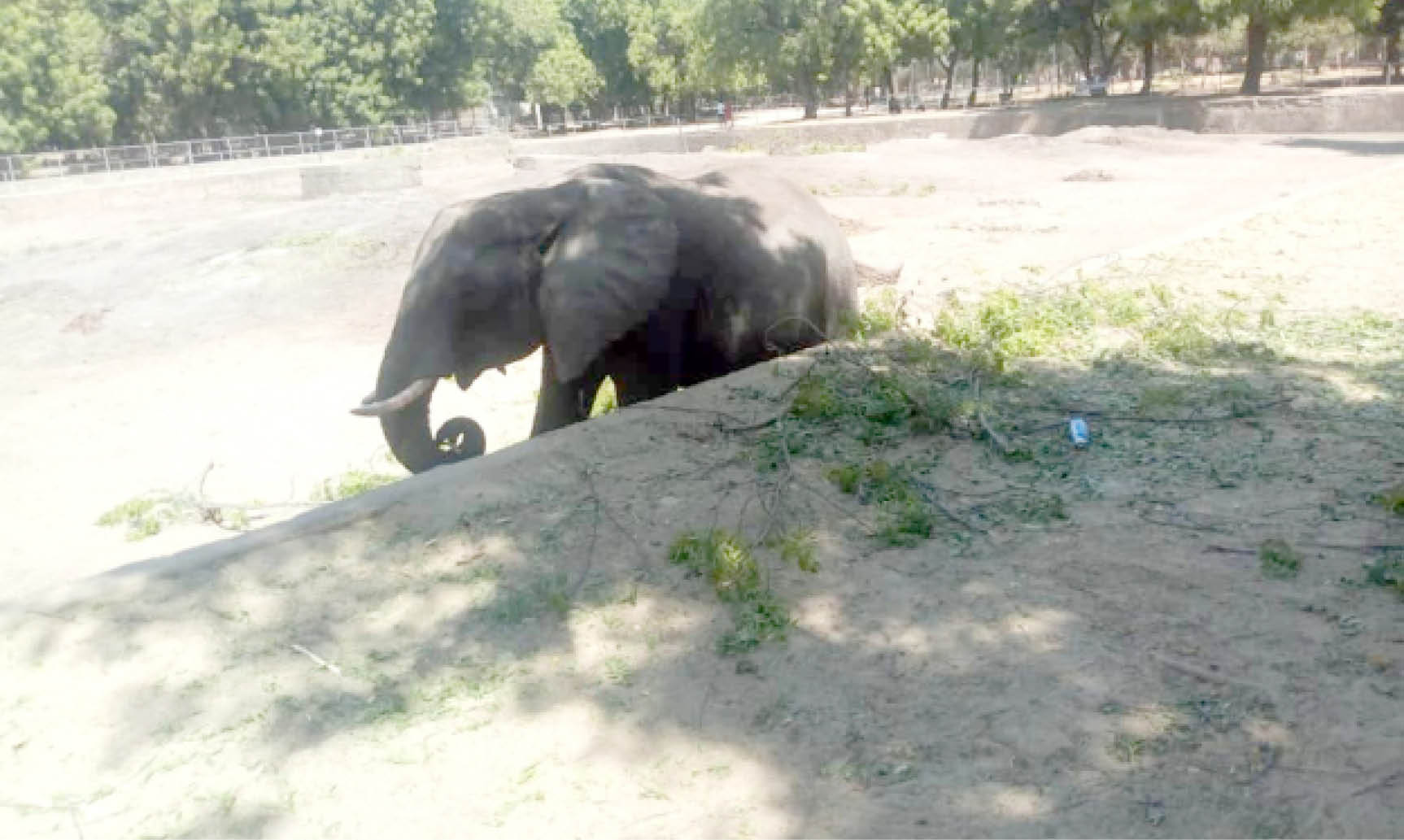Maiduguri zoo prepares for lion cubs
Activities at the Sanda Kyarimi Animal Park in Maiduguri, the Borno State capital, are in top gear as the park and its staff are set to witness the delivery of cubs by a lioness which got pregnant in the zoo under controlled mating. There are two lions and a lioness in the park, but the […]

Activities at the Sanda Kyarimi Animal Park in Maiduguri, the Borno State capital, are in top gear as the park and its staff are set to witness the delivery of cubs by a lioness which got pregnant in the zoo under controlled mating.
There are two lions and a lioness in the park, but the lions are never allowed in the same space at once. The routine is that each lion is released to stay with the lioness for at least two days before it is returned to its cage. This is done to avoid fighting over who should mate with the lioness.
- Landmine kills 5 soldiers, injures 15 others in Borno
- Nigerian Law School rejects Law graduates of Benin Republic varsity
A ranger at the park explained that the lions “fight dirty and compete to mate. This explains why males fight to control groups in the wild.”

The ranger further said, “Lionesses are secretive about pregnancy and giving birth, but we have made satisfactory arrangements for the arrival of the cubs.
“The gestation period of the big cat hardly exceeds 15 months and the lioness would thereafter go into hiding as soon as labour starts.”
He revealed that the park’s management had procured a number of goats which would be slaughtered to feed the nursing lioness.
He said, “Fresh goat meat has key nutrients needed to boost the energy and milk content of the lioness. The big cat gives birth to between one and six cubs and has only four teats,” he said.
A student visitor at the park said because of its importance, “Virtually every visitor to the park scrambles to have pictures with the lions,” explaining that he was at the park to examine the variation of captive and wild populations.

He noted that animals in captivity were known to be familiar with humans to the extent that they often obeyed certain instructions and could even pose for pictures.
Established in 1970, the Sanda Kyarimi Animal Park is said to be the only public facility in Borno which houses and displays wild animals to visitors, tourists, researchers, as well as for the conservation of endangered animal species. The park now attracts dozens of visitors, particularly youths, who go there to catch glimpses of wild animal species as the Sambisa Game Reserve has turned into a hideout for Boko Haram terrorists.
Interestingly, most of the animals and birds in the park can be found in the wild in the state, particularly at the Sambisa Park, and in other parts of Nigeria, another ranger explained.
Meanwhile, at the park, the Mona monkey for example, which can be found in parts of Taraba and Ekiti states, attracts children due to its unique behaviour and structure. Like most monkeys, they feed on leaves, fruits and seeds which the children happily give them in their cages.

The Mongoose monkeys too can be found in Taraba State, and the baboons, which the ranger said had been cared for in the park for a long time, were brought in from the Sambisa Park.
The oldest inhabitant of the park is a chimpanzee named Mary, which has been there for 46 years. “A white woman, Mary, donated it to the park 46 years ago and so it was named after the woman,” the ranger said.
Chimpanzees can be found in Borno State, particularly in areas that share boundaries with the Waza National Park in Northern Cameroon.
Still at the section reserved for monkeys, there is the Tantalus monkey which is mostly kept as pet in homes and amusement parks.
Visitors are prevented from going close to the cages of the monkeys to avoid being stoned or attacked with faeces.
The ranger said a military governor had once visited the park and monkeys threw objects at his entourage.
“The governor thereafter directed that metal barricades be installed metres away from the enclosures to distance the animals from people,” he said.

The ranger said chimpanzees in the Sambisa Park were in danger of extinction mainly as a result of habitat loss and poaching.
The ranger further said ostriches were hatched on different farms in the state from where they were procured for the park.
There are also the non-venomous rock pythons that are fed with live pigeons; the crested porcupines and crocodiles.
Crocodiles are higher in number than other animals at the park. They are kept in two enclosures with the adults separated from the hatchlings. Most of them remain motionless until visitors throw objects at them.
However, the ranger explained that, “It is not allowed to throw objects into the cages or stone an animal. We occasionally remove plenty objects thrown into their cages. One of the crocodiles was injured on the back and we applied drugs.”
There are also elephants, white hyenas, buffalos and so many species of birds at the zoo, including the turning eagle and the marabou stork.
An official of the state Ministry of Environment said enclosures were cleared for zebras and giraffes, which would be acquired soon.
He said, “Already, some animals have been acquired from other zoos; government has given approval for the management to obtain more animals.”
There is also an amusement park within the facility where children visit and play a lot of games, rides and engage in several other outdoor activities.
